| Umělec magazine 2003/1 >> Design Runner | List of all editions. | ||||||||||||
|
|||||||||||||
Design RunnerUmělec magazine 2003/101.01.2003 Jiří Ptáček | theme | en cs |
|||||||||||||
|
When I came round to discuss an interview, Petr Písařík started planning what should be said in it. I did not want to hear about it in advance, so we lingered over the pictures instead. Large canvases that Petr had covered in adhesive tape with layers of coating and spray coating stood packed, just as he had brought them back from the most recent exhibitions at Brno’s Dům Pánů z Kunštátu and Prague’s Home Gallery. The unfinished canvases differed, however. Concentric crystals protrude from unfinished, conical formats. A shinkanzen originates from one, a space satellite from another, industrial cranes from a third. We stopped at a picture of a large fallen tree.
Then he invited me to a club he had free entrance to. We stayed until five. On several occasions Petr Písařík got up on the stage and danced. Between five and nine we painted together. The interview had to wait for a week. Sometimes I have the impression that once in a while you emerge, bring out something, and then withdraw again. Does it mean that you’re recharging your batteries and absorbing other material during these breaks, or is it some kind of strategy? What you’ve said is a compliment. I take it as a compliment. I’d like to say that when working I have definitely realised that you can’t mess with something you don’t know anything about. And those small or large sinusoids, it doesn’t matter what they are like, result from the fact that one needs to tap some experience. Something you can reproduce, so that what you do is true, and so that as many people as possible can understand it. This is becoming increasingly clear to me. But personal experience in art has been on the wane for quite some time now… It may be true that some things are built upon a different concept, however, even this concept must be based on some reality. Even when appropriating things, one must know why. In your case, there is no doubt whatsoever that your work is based on coherence. In fact, since I’ve known you, you’ve stuck to pictures. Despite concentrating on other media as well, you keep on painting. Is that a kind of specific experience of yours? It is probably true that painting is my destiny. I have a feeling that I can somehow feel the colours and it would be ridiculous to try to become a runner when one is a swimmer. Here, painting is still a kind of business commodity. I’d agree that a thing one paints on a canvas is more sellable than video, but I don’t do it because of that. I’m interested in the personal participation in work. That’s extremely important to me. But then work with architecture, design and non-decorative art, it definitely lacks this aspect to a certain degree. I think that everyone noticed long ago that trends were increasingly overlapping and that people want to express themselves, so it has become part of artistic projects anyway. And I think that when I studied installation at Kolíbal’s, in some way I became able to understand space in the architectonic sense of the word too. If it’s possible to say it like that. Today, I’m glad that I can meddle with their job and only hope that I won’t be beaten for it. Perhaps not so far, perhaps I’ve always managed to romanticize space. I call it that and don’t place myself elsewhere. At the Pisi Sori exhibition at MXM you enlarged a small drawing by a boy we used to call van Grogh. He probably didn’t think up this nickname and was none too happy with it, but when he sold his paintings for twenty crowns, he could always go and get a grog. We both have a small collection at home. That was for a different reason. Contemporary painting tackles problems like bad colour or drawing composition. Questions arise of how we can build paintings. One possibility is to be inspired by what comes directly from the layman. Often it is made with such enthusiasm that one is amazed at how someone can grasp something merely by feeling. That’s why that picture was included in my exhibition. And also because I’m a great collector of things from people I know. And here there are pictures from a hairdresser. In fact, they are quite inspired… They are, but I’m not forming any school here. I say that it is a kind of therapy for me. My studio here is so large that we can easily fit in. It’s excellent if I can make it possible for someone to be here. And Josef comes over for a while, stretches out his canvases and we have a chat. It’s great. I’m interested in everyone’s opinion, including laymen’s. I can use them as a springboard. But I want it to be known that the boys from the Academy are painting here too. They start a picture and then I join in. I enjoy it. For example, Mário Chromý was here and made something great. And, recently you saw Vladimír Skrepl. I painted with him in this manner for maybe the second time and it was amazing how he stood above it here and totally fell to pieces. But then he made great things. He wanted to give one to a friend who was supposed to come over to see me, but in the afternoon he called: “Has she been over yet? No? Just don’t give anything to her.” In the mid-1990s you appropriated logos a lot and interpreted them into pictures. Frequently, you were too brilliant at it, virtually as perfect as the logos themselves. It’s really important that one uses the correct means. A picture is always a comprehensive sum total of factors which either mesh or don’t. And when people are able to read it and take it in, then it’s right. Therefore, I’m definitely for using all those things, such as logos or industrial colours. I stress that I’ve only abandoned the logos because I started to use that colourfulness. Maybe the logos have transformed into the colours. But I was trying to point out something else. When I saw the pictures at your latest exhibition in Brno, I had the general impression of them being overlaid up to total physical exhaustion… Well. Maybe sometimes. Sometimes it’s true that I myself realized how I had “mushed” the things, so I had to brush over them. But it’s because of painting in this studio. I come here every day and it’s part of my life. And so I have the feeling that it can be seen in my pictures. That not only applies to the painting, but also the process. You work every day? No kidding? Yes, but then it’s true that you can’t see the moments when you should be taking a break. Although, to tell the truth, I wish everyone could work every day. That’s the only possible way of achieving something. And I must develop and build up the faculty of self-criticism and be stricter with myself than with anyone else. As you applied the layers, sometimes I began to have the impression that, paradoxically, colours have almost disappeared. Broken areas were unable to defend themselves in color terms. For the time being, I’ve put a lid on it. I think that my most recent work reveals that I’m trying to return to some form of imaging. In the past I focused on creating a decorative area on which some reality could emerge in the second layout, however, now I consider that it wouldn’t be a bad thing to again focus on making things immediately legible, with colour only playing a secondary role. So that colours diffuse in subsequent layouts, but at first glance it would be clear what is in question. Recently, I’ve been regularly meeting the guys who have studios on Wenceslas Square, and we’ve been discussing painting. There’s nothing better than flicking through books. Like the one that was published some time last year and costs about two and a half thousand crowns. Four of us went through it together. Vladimír Skrepl, Honza Šerých, me, Petr Pastrnák… and it was great. Perhaps the best thing about it was that we all had something to say. Does that mean that a community is emerging? I’m sure I’m speaking for the guys too when I say that we’ve increasingly felt we’re struggling for the same thing. And that’s what I like about it since we can help each other out and move on. It’s mutual competitiveness, and that’s good. And where does this competitiveness stem from? Maybe it’s merely down to the fact that our studios are in such close proximity and it’s not hard to go round to each other’s place. In Brno I had the impression that the other exhibits didn’t go with the pictures. They suddenly seemed somewhat frivolous, while the painting had such an edge … I like both exhibits, the Home Gallery and Brno. I’d agree that the Brno exhibition was somehow a bit limp. It’s probably my fault that I wasn’t able to put my foot down and get rid of a few things. But I had to work with the movables over there, which I couldn’t just discard. I tried to sort it out somehow and in the final analysis this was the best I could have done. Last year you prepared an exhibition in your studio. But on the day of the scheduled opening the floods hit Prague and no one could cross the Vltava. You wanted to repeat the exhibition. This year you’re talking about another one. What draws you to this? I have to say that I’ve been increasingly seeking the type of presentation whereby I know exactly what the limits are. That’s why I’m now attracted by the offer to exhibit in the cafe of the Industrial Palace. I know what’s possible and now it’s up to me to put the finishing touches to it. It’s similar with the exhibitions here. My friends come over and I show them what I’ve been doing. I know it well here, having been here a long time, and my pictures still hang here. So after some time I’ll find the best places for them. In fact design again? Well, there is a little design in it again. Maybe it’s the cross I have to bear.
01.01.2003
Recommended articles
|
|||||||||||||
|
04.02.2020 10:17
Letošní 50. ročník Art Basel přilákal celkem 93 000 návštěvníků a sběratelů z 80 zemí světa. 290 prémiových galerií představilo umělecká díla od počátku 20. století až po současnost. Hlavní sektor přehlídky, tradičně v prvním patře výstavního prostoru, představil 232 předních galerií z celého světa nabízející umění nejvyšší kvality. Veletrh ukázal vzestupný trend prodeje prostřednictvím galerií jak soukromým sbírkám, tak i institucím. Kromě hlavního veletrhu stály za návštěvu i ty přidružené: Volta, Liste a Photo Basel, k tomu doprovodné programy a výstavy v místních institucích, které kvalitou daleko přesahují hranice města tj. Kunsthalle Basel, Kunstmuseum, Tinguely muzeum nebo Fondation Beyeler.
|

























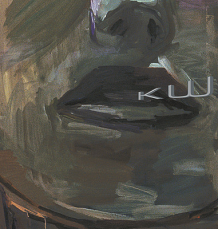




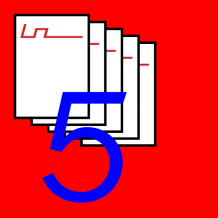
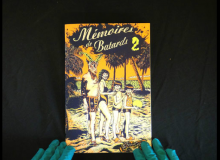
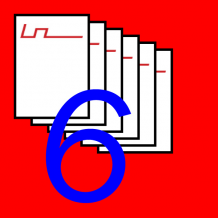
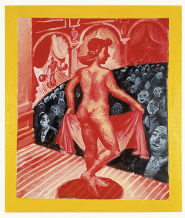


 New book by I.M.Jirous in English at our online bookshop.
New book by I.M.Jirous in English at our online bookshop.
Comments
There are currently no comments.Add new comment